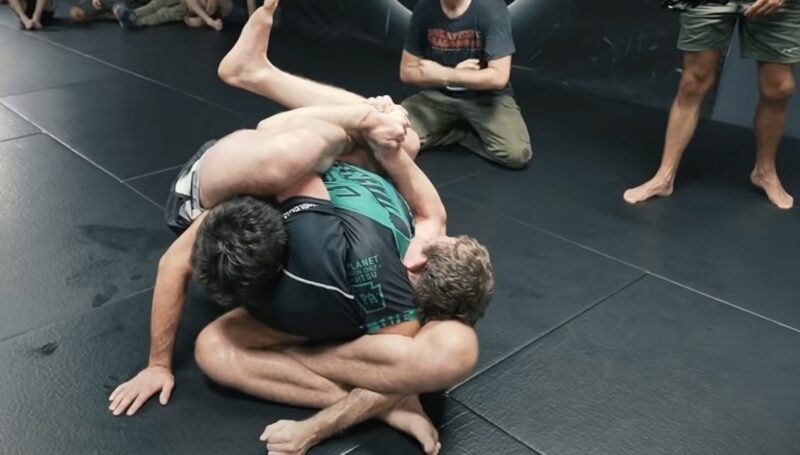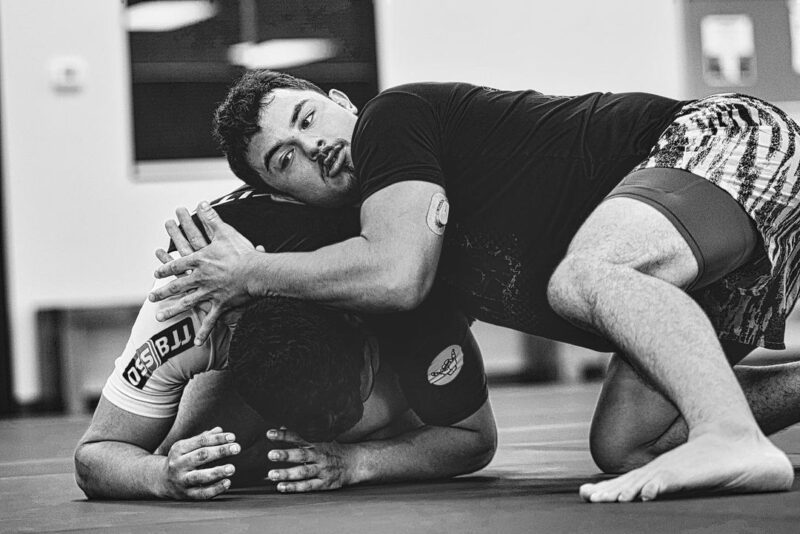Introduction
The Buggy Choke, a formidable submission technique in Brazilian Jiu-Jitsu, boasts several variations that have caught the attention of grappling enthusiasts. These variations, including the classic technique and its modified counterparts, each offer distinct advantages in various scenarios. This article explores these Buggy Choke techniques, providing a comprehensive comparison between the classic one and its advanced variations. It also includes a step-by-step guide for an advanced variation and recommendations for when to utilize each technique. Whether one is an experienced BJJ practitioner or simply a martial arts aficionado, understanding these techniques can undoubtedly elevate one’s grappling skills.
D’arce Choke and Its Advanced Variations
In the realm of Brazilian Jiu-Jitsu, the classic D’arce Choke involves the art of ensnaring the opponent’s neck within the cradle of one’s arm while retaining control over their head and arm. This technique is typically executed from the side control or top turtle position and demands precise grip work to generate the necessary choking pressure. The modified iterations of this submission introduce innovative setups, grips, or hand placements, thereby enhancing its efficacy. Mastery of these advanced variations can significantly broaden a practitioner’s repertoire, enabling them to catch their opponents off guard. While the classic D’arce Choke serves as a robust foundation, the more advanced versions have the potential to transform a practitioner into a more formidable grappler.

Step-by-Step Guide to Advanced Variations
One of the advanced variations is the Anaconda Choke. To perform this technique, an individual should follow these steps:
- Setup: Commence from a dominant position, such as side control. As the opponent attempts to thwart their advances or defend, they should slide their arm underneath the opponent’s neck, wrapping it around the opponent’s head, ensuring that their biceps rest snugly against the opponent’s neck.
- Grip: Secure a gable grip by interlocking the hands together on the side of the opponent’s neck opposite to the choking arm.
- Squeeze and Roll: While maintaining control over the opponent’s head and arm, the individual should constrict their elbows together and execute a rolling motion onto their back. This rolling action tightens the choke by compressing the opponent’s neck.
- Maintain Pressure: As they roll, they must retain their body weight on the opponent to prevent any escape attempts or the release of pressure. The choke should be sustained until the opponent either submits or loses consciousness.
When to Use Each Variation?
The classic technique proves effective when a practitioner attains a dominant position and the opponent’s arm is readily available for control. This classic version is optimally employed from side control or the top turtle position when the practitioner maintains control over the opponent’s head and arm.
Modified variations like the Anaconda Choke come into play when the opponent resorts to defensive tactics, such as tucking their chin or obstructing the practitioner’s arm. The Anaconda Choke offers a strategic solution to work around these defenses and secure the submission.
Tips for Mastery
- Positional Control: Regardless of the variation employed, it is imperative to establish and maintain control over the opponent’s position, thereby negating any avenues of escape.
- Regular Partner Practice: Engaging in regular training sessions with partners can aid in refining one’s technique and sensitivity to resistance when executing the method and its variations.
- Timing Is Critical: Understanding the right moment to transition from the classic technique to a modified variation is essential, as it can take the opponent by surprise.
- Maintain Composure: Composure during execution is crucial; panicking can lead to errors that the opponent may exploit.
- Submit, Don’t Harm: It’s vital to remember that the objective is to secure a submission, not cause harm to the opponent. Always release the choke immediately upon the opponent’s tap or signal.
In conclusion, the Buggy Choke and its variations are valuable assets in the world of Brazilian Jiu-Jitsu, offering a plethora of options to secure submissions. Understanding the classic technique and mastering advanced variations like the Anaconda Choke can transform an individual into a versatile and skilled grappler. It is crucial to wield these techniques responsibly, bearing in mind the safety and respect owed to training partners in any martial art.
